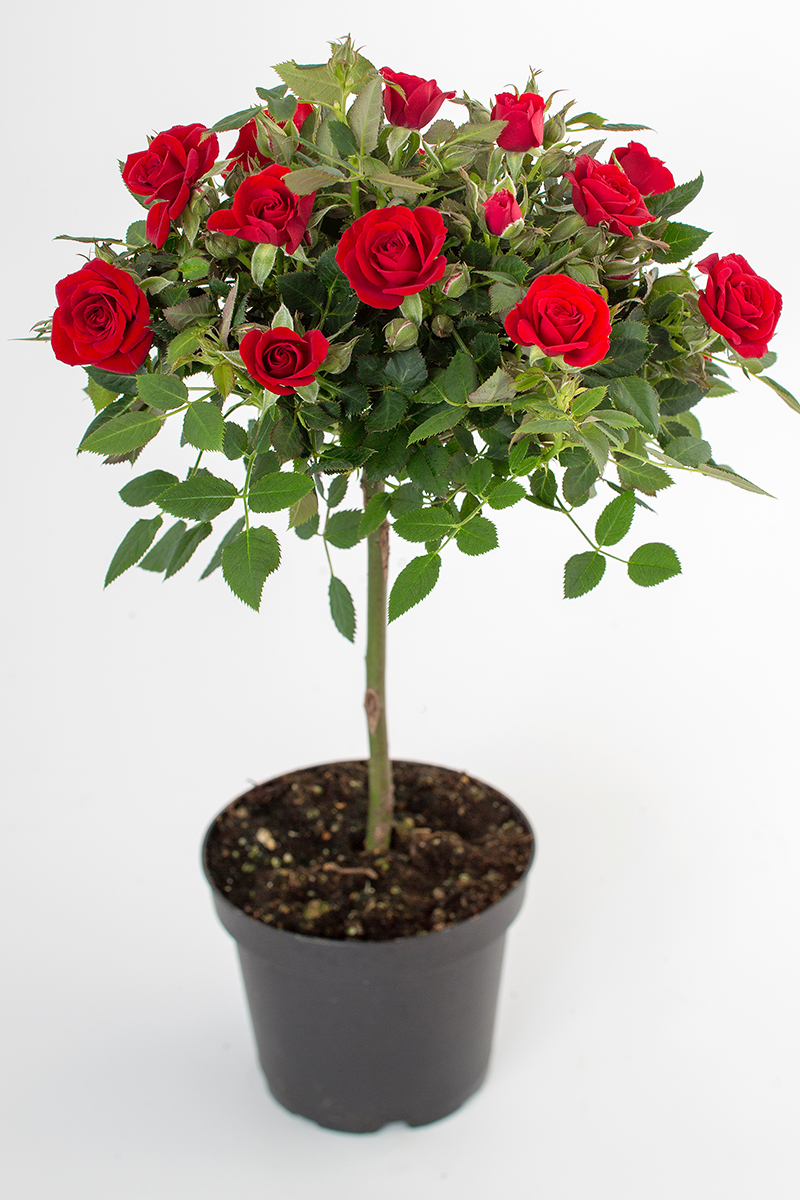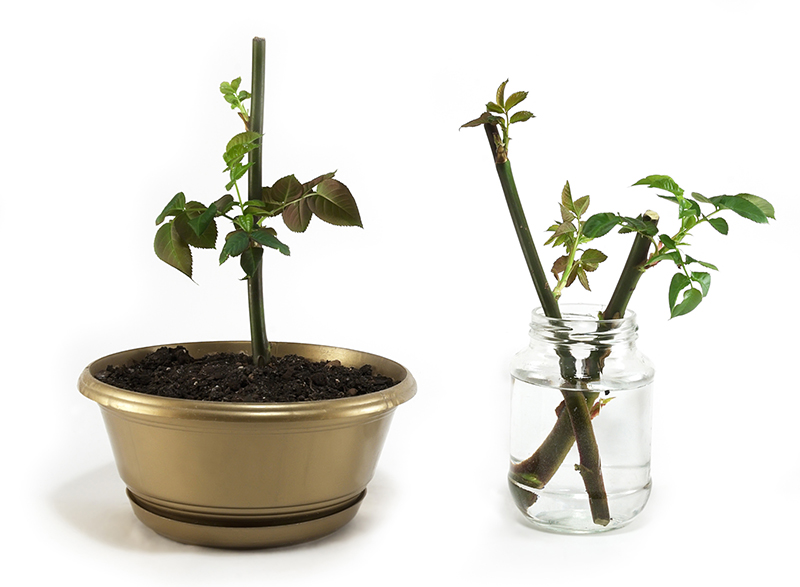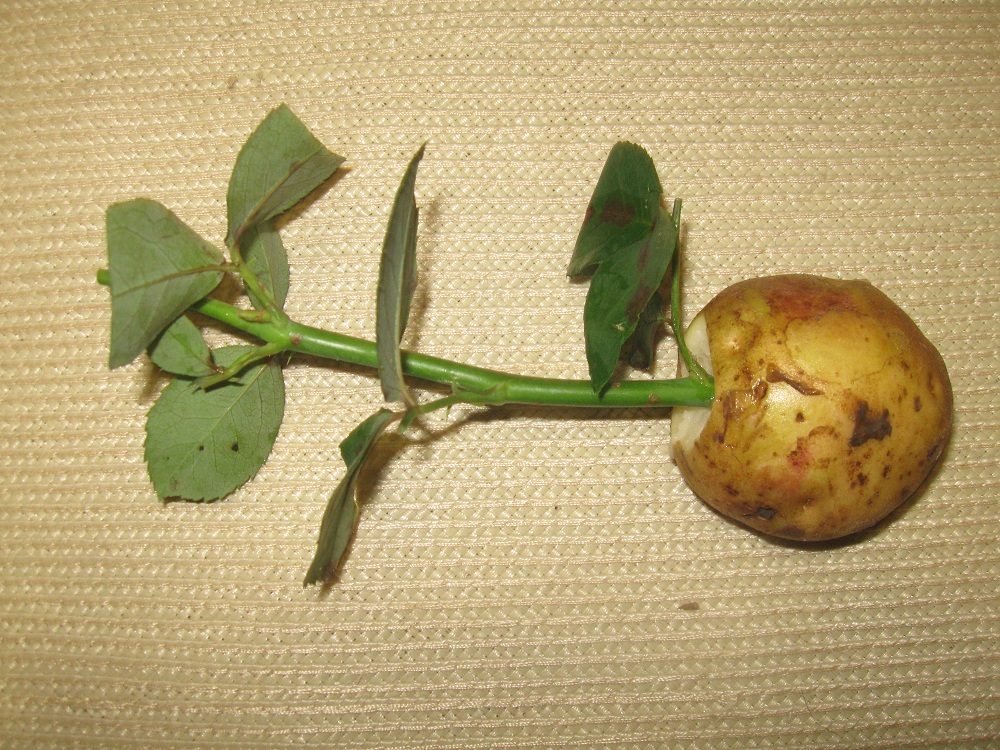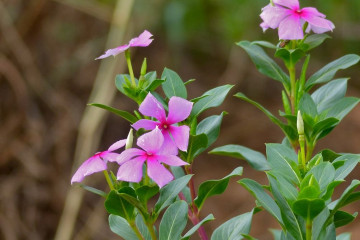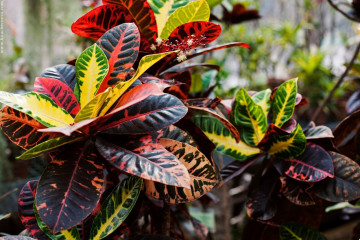Indoor rose: home care and breeding methods
Content:
Rose is a decorative flower, sung by many poets, covered with legends, has accompanied a person from time immemorial. She surprises with a variety of colors and flower shapes, a wonderful aroma. Inspires to create new varieties and increases the number of admirers who dream of how to grow a homemade rose for themselves and their families.
When and how it blooms
Very often in stores, roses bloom in winter, disrupting the normal cycle. This is due to the introduction of drugs that stimulate flowering.
Having settled at home, the flower will restore the natural course of processes.
Flowering period
Individual species of this plant bloom in different ways. The flowering period depends not only on the species, but also on when and where it was bred.
Usually flowering is observed in spring and summer, since the rose is a heliophyte (light-loving plant), under favorable conditions it can bloom in winter. In the southern regions, it blooms once every three months and even more often, if comfortable conditions are created, the roses will bloom every 2 months, from spring to autumn.
The small flowers of some varieties are completely odorless, others exude a strong aroma. The flower lasts about two weeks.
Care changes
When flowering begins, roses require more frequent watering, purchasing and fertilizing once a week.
Main types
There are no special varieties intended for cultivation only at home. Usually for this they take ordinary roses with small sizes, which are grown in the open field.
A classic indoor rose is a short bush or a small tree with flowers of different shades: from white, cream and yellow to pink and scarlet, with lanceolate leaves with denticles along the edge.
Tea, small polyanthus, miniature, Bengal roses and container hybrids are most suitable for these purposes.
Tea rose is ideal for indoor growing. It was bred as a mix of several varieties of Bengal roses. Most of its varieties are created exactly as indoor flowers. The bushes look decorative, with dense green foliage, the flowers are delicate and fragrant.
The Chinese rose is prized for its decorative effect - small flowers completely cover the bush.
Bengal roses were the first to appear in Europe as the only flowering variety. They do not need pruning and special care, they only do sanitary pruning. They branch well and do not stretch in height. The advantages of these roses are considered to be long flowering and a compact bush, some of them are completely odorless.
Polyanthus roses are indoor varieties created by crossing branching roses. The bush reaches an average of 50 cm in height, branched and dense. In some varieties, flowers are collected in brushes, there are double and semi-double types. These roses feel great not only in the apartment, but also on the balconies.
Bushes of miniature roses are more compact, flowers are often solitary or form inflorescences of several pieces.
A wide variety of species and varieties allows you to choose a flower to your liking.
Home care
How to care for a rose in a pot at home worries many gardeners. Growing a room rose will require certain rules for the maintenance and care of the flower. She loves brightly lit places and fresh air. It will be useful to rearrange in the warm season to an open veranda or balcony, placement by an open window, if drafts, which she is afraid of, are excluded.
She needs an open space, so do not overload the windowsill. To form a beautiful lush bush, you will need to rotate the pot, exposing different sides of the bush to the light.
Home rose in a pot how to care for in winter? In winter, it is required to arrange a rest for the plant, creating conditions for a dormant period. Only in this case, the rose, having gained strength, with the onset of spring, will give abundant flowering.
The plant will acquire a well-groomed healthy appearance if you water and feed the flower on time, regularly spray, transplant, maintain the temperature necessary for each period, carefully regularly examine the plant, detecting the presence of pests and emerging signs of disease in time.
Temperature
A comfortable temperature for keeping a room rose will be 20-25 ° C. During the dormant period (October-February), a decrease to 5-8 ° C is required. With the beginning of spring, when the phase of active growth begins, the temperature must be raised gradually.
This is an open field plant, for full growth it needs fresh air. In the summer, it is useful to take it out into the garden or on the balcony. The rest of the time, it is enough to arrange regular ventilation, avoiding drafts.
The soil
How well a room rose will grow depends largely on the chosen soil. It must pass water and air well. It is better to use a store-bought mixture for roses with a low peat content.
Self-prepared soil should contain in parts:
- 4 - sod land;
- 4 - humus:
- 1– sand.
The second version of the composition:
- 1 - humus;
- 1 - leafy land;
- 1 - coniferous land;
- 3 - sod land;
- 1 - sand.
Humidity
Caring for a rose at home requires adherence to the watering and moisturizing regime. The surrounding air should be 60-65% humid. Drier air will cause pests to appear On sunny days, you should refrain from spraying the leaves so that there are no burns. During the heating season, when the air in the apartment is very dry, spraying is done regularly or the pot is placed on a pallet with wet expanded clay.
It is necessary to ensure that the earthen lump is moist at all times. Watering is carried out when the topsoil is dry. The frequency of watering depends on the growing season of the plant: in summer they are more frequent, in autumn-winter they are reduced. If you completely abandon watering, the rose can shed its leaves.
Lighting
Indoor rose, like any flower, is a light-loving plant. She needs a lot of light for normal well-being; placement on the south window will be a good option. However, direct sunlight is not suitable for the rose, especially in the summer heat, you need to shade it, protecting it from the scorching rays.
Transfer
The purchased plant must be transplanted by changing the soil and container. Sometimes in a purchased pot there are several bushes that need to be planted.The soil for distilling a flower contains substances that stimulate growth and flowering, which squeeze all the strength out of it. Plastic containers are often chosen small, in which the root system becomes cramped after a short time.
Rapid drying of the soil, wilting, yellow color of leaves, stems and buds indicate that a transplant is necessary. It is performed by transferring the flower to a new container with a complete replacement of the soil with a fresh one.
In case of a flower disease, if it begins to dry out, it does not bloom for a long time, provided that the maintenance rules are followed, a transplant is also required.
How to transplant a store-bought indoor rose after purchase? Before transplanting, you should cut off all the flowers and buds that are on the bush in order to focus the strength of the plant on root growth.
Step-by-step transplant process:
- Carefully remove the rose with an earthen lump from the old pot.
- Examine the roots, entwining a lump, healthy roots - yellowish or white.
- Dry, rotten and blackened roots, if there are few of them, are removed.
- A drainage layer of expanded clay is laid at the bottom of the new pot.
- A layer of prepared soil is poured, compacted.
- A bush with a lump is installed, they fall asleep and compact the soil for motionless fixation of the plant.
- Watering.
If a newly purchased plant was transplanted, be sure to carry out treatment against pests with the drug "Fitoverm" and against fungi with "Fitosporin".
Pruning a room rose
Indoor rose needs spring pruning. It is carried out when bud growth begins, because bud formation occurs on new shoots.
Usually, after flowering, they also prune the bush. If you do not prune, you will not be able to get abundant flowering. With the help of correctly pruning, an ungunned beautiful bush will form. When cutting off a branch, it is necessary to leave 4-5 buds on it. The faded flower is cut at the level of the first leaf, at the base of which there is a bud turned outward. Thin and weak shoots are also cut off.
Possible growing problems
Mistakes made when caring for a rose cause it to feel unwell. Often worried about the lack of flowers on the plant, the main purpose of which is to bloom and smell.
There are several reasons for this:
- The most common is the absence of a dormant period;
- Insufficient lighting;
- Unsuitable soil composition;
- Lack or lack of nutrients in the soil;
- Incorrect pot size.
A weakened plant is attacked by pests and diseases.
The plant dries up
The rose dries up in a room that is too hot. You can save the situation by moving the flower away from the heat source or placing it in a pallet with wet expanded clay, not forgetting to moisten the soil. It is useful to spray the leaves.
Quite often, the pet dries out, and the leaves begin to fall off due to decay of the root system caused by excessive watering, which leads to waterlogging of the soil, or the use of cold water. Too dense soil does not have time to dry out before the next watering, which also causes root rot. You can solve the problem by clearing the roots from the old soil and removing the rotten roots, they are soft and transparent, and the rest can be washed in a weak pink solution of potassium permanganate (potassium permanganate). Then keep the roots in a solution of the fungicide "Fitosporin-M" for half an hour, then dry them in the air for 2 hours. Transplant into another container with fresh, loose and nutritious soil.
The foliage turns yellow
If the leaves turn yellow, the cause may be waterlogged soil in the pot. To restore the flower, watering is stopped for a while, carrying out only spraying of the leaves.
If there are signs of acidification of the soil, the flower is transplanted into a substrate for roses purchased in the store.
Others
If a newly acquired flower begins to shed its leaves, it thus responds to a change in its environment. It is enough to find a corner for him on a warm-lit windowsill without drafts in order to regain his former lively appearance.
Withering of flowers and buds, blackening of leaves and their dropping may indicate a fungal infection, an invasion of pests or frostbite of a rose. That is why the flower brought from the store is not placed where the green pets are located, arranging a two-week quarantine.
Spots on the leaves appear due to too high temperature and high humidity, very dense soil in the pot, thickening of the plantings. Brown spots grow, parts of the plant die off. The affected areas should be immediately removed, the whole plant should be treated with a preparation containing copper or sulfur.
Reproduction methods
How to grow a homemade rose? The rose is propagated by seeds and cuttings. The first method is used by breeders to develop new varieties. It is easier to grow a rose yourself from a cuttings. This method not only preserves the varietal characteristics of the parent plant, but also gives a specimen adapted to the conditions of the house.
Cuttings
Cuttings are harvested from the branches left after pruning. Cuttings are selected from healthy, well-developed branches with 3-4 buds up to 15 cm long, the lower cut should pass clearly under the bud. The buds and lower leaves are removed. Prepared cuttings are placed for a day in a container with a solution that stimulates root formation.
Rooting can be done in several ways:
- Place the cuttings in a container of water, set in a well-lit, warm place.
- Make a depression in the potato tuber, insert the stalk. Plant the tuber in the sand, leaving a small part above the surface, cover with a glass jar. Do not forget to water and ventilate.
- Plant the cuttings at an angle directly into the prepared soil (humus + peat), sprinkling with sand on top. Cover with a jar.
After the roots and leaves appear, the cuttings are transplanted into separate pots.
Despite the capriciousness and exactingness in the care of a room rose, its popularity among professional and amateur florists is constantly growing. Along with hibiscus, oleander and hydrangea, the rose is one of the top-ranked most popular flowering houseplants.

